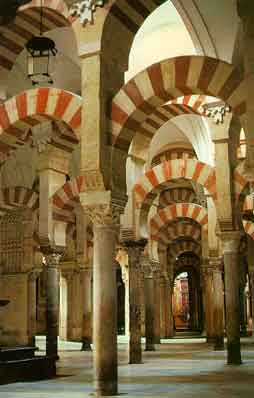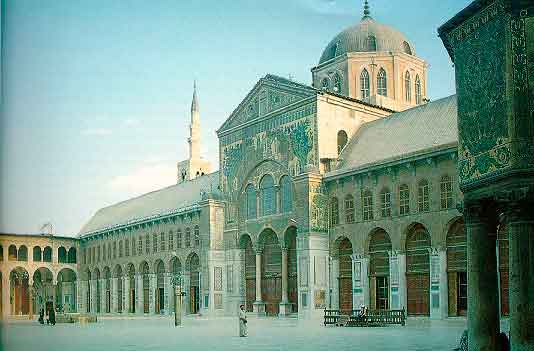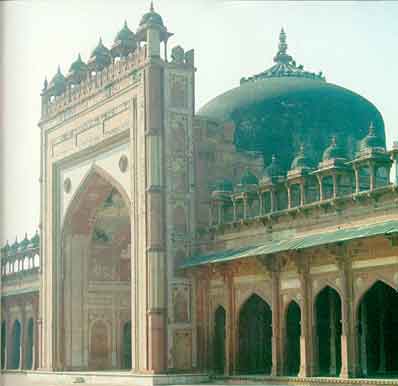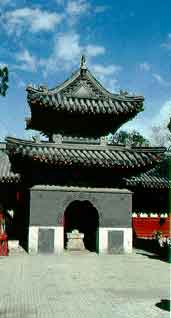
monuments of grandeur
throughout Asia, Africa, and Europe monumental structures that evoke the unifying, communal structure of the mosque can be found. Some of these great monuments are also monuments of victory, such as the Hagia Sophia in Istanbul; after the Ottomans conquered the city in 1453, they transformed this prized Christian church into a prized Islamic mosque.
More commonly, the architectural splendor of Islamic architecture throughout the world has signaled the religious and cultural triumph of a world-wide umma. The ingenuity and creativity of Islamic architects, from Spain to china, impacted local cultural forms as much as Islam affected local religious life.
Below are some of the more stunning and famous examples of this monumental Islamic architectural form:

This is the prayer-hall of the "Great Mosque" in Cordoba, Spain (Andalusia, as it was known under Islamic rule). This visual and architectural marvel was built in the eight century--some 400 years before the Christian Gothic cathedral attempted analogous innovation and creativity.

The "Great Mosque" in Damascus was built over the site of a Christian church during the days of the Umayyad caliphate.

This mosque was built by Akbar, emperor of the Moghul empire in India. The dome is pointed, showing the influence of Indian architecture.

This is the minaret of a Chinese mosque, located in Beijing. The ways in which customary Islamic architecture (the minaret) combine with Chinese style (the pagoda) are obvious.